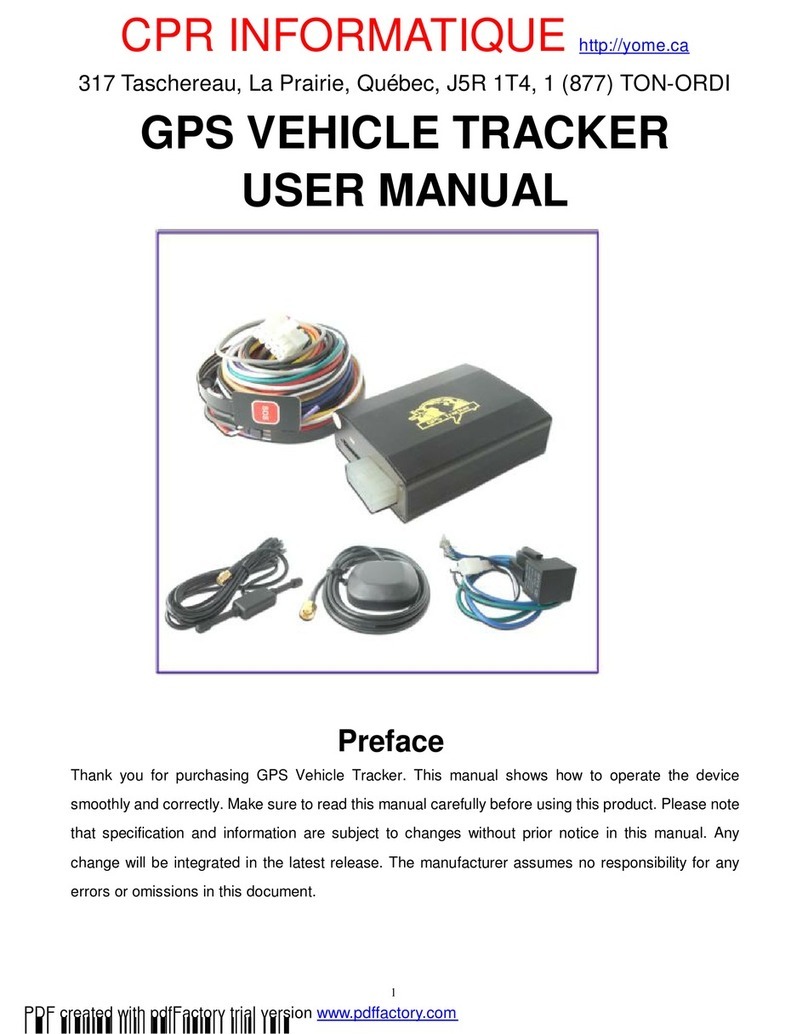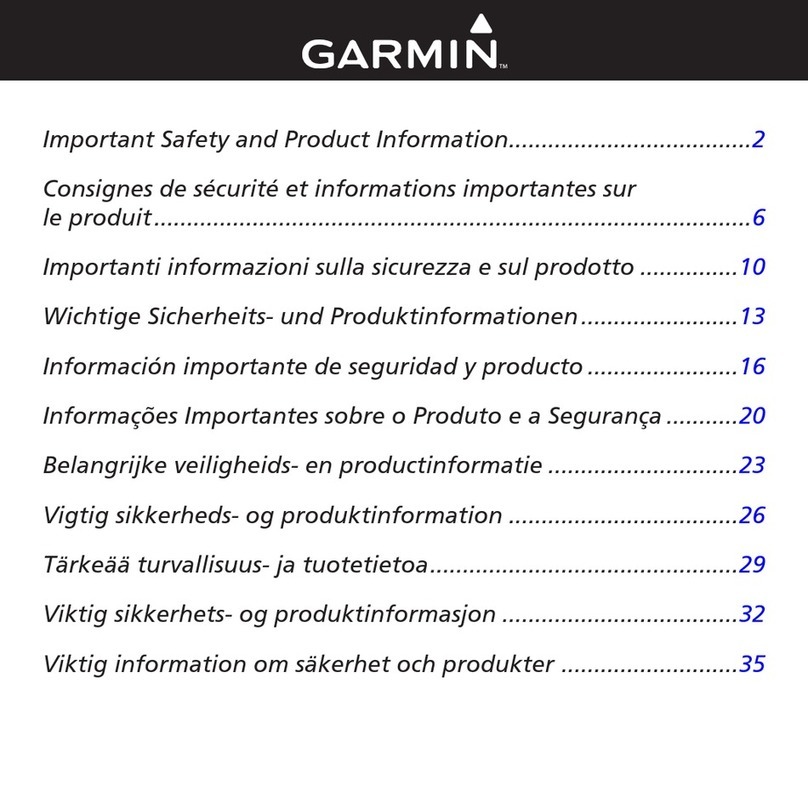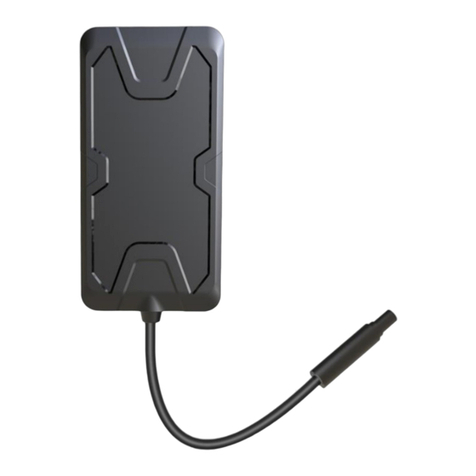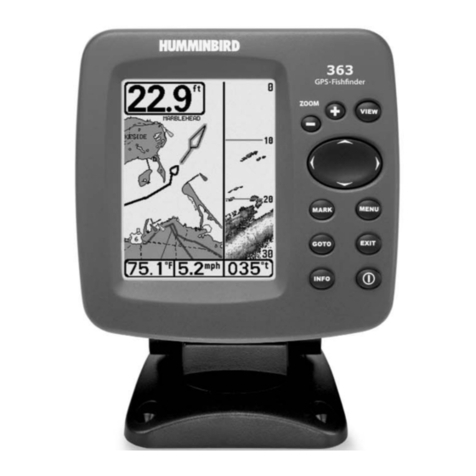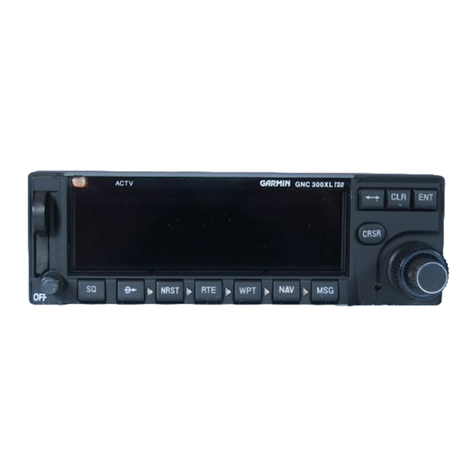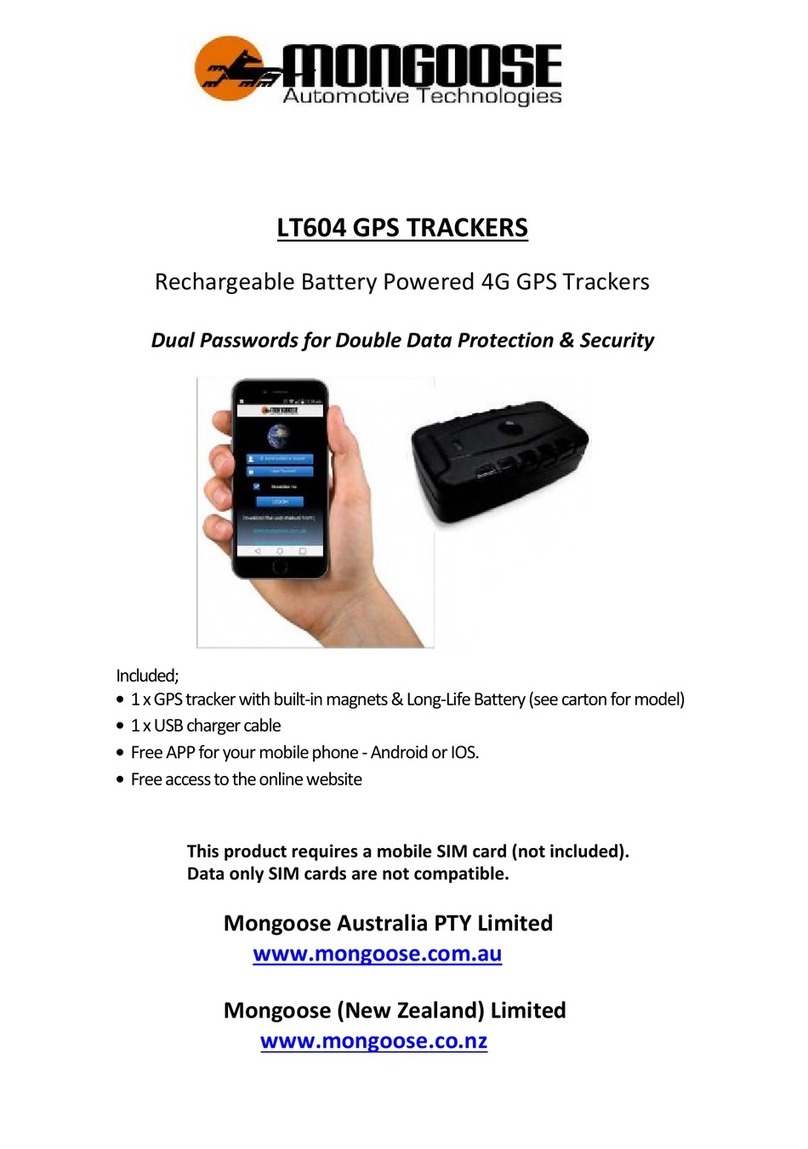Inshore ChannelPilot Mk 2 User manual

Inshore Systems Ltd
www.inshoresystems.com
mh@inshoresystems.com
+44 (0)7798 989697
ChannelPilot
Mk 2
Operator’s Manual
Useful Shorcuts
Qastor Advanced Password = 0000 Navigation Mode Alt+N
Ship Setup Alt+F7 Docking Mode Alt+D
Load (Existing) Vessel Ctrl+L Lock Approach Mode Alt+L
Night Screen Mode Ctrl+N Full Sceen Toggle Alt+Enter
Day Screen Mode Ctrl+B Exit Alt+F4
July 2013

This page is intentionally blank

ChannelPilot Operator’s Manual
Table of Contents
TABLE OF CONTENTS .............................................................................................. 1
1UNPACKING........................................................................................................ 3
2CHANNELPILOT OVERVIEW ............................................................................. 3
3BEFORE USE...................................................................................................... 3
3.1 CHARGING 3
3.2 INITIALISATION SOFTWARE 4
4OPERATING........................................................................................................ 4
4.1 LOCATING THE CHANNELPILOT 4
4.2 CHANNELPILOT INDICATORS 4
4.3 LAPTOP CONNECTION 5
4.4 START-UP AND MMSI SYNCHRONISATION PROTOCOL 5
5OPTIONAL MF DGPS BEACON UNIT ................................................................ 6
6HANDLING AND STORAGE................................................................................ 6
6.1 AFTER USE 6
6.2 LONG TERM STORAGE 6
6.3 OPERATING IN EXTREME TEMPERATURES 6
7PERFORMANCE SPECIFICATIONS .................................................................. 7
MODEL INFORMATION AND SUPPORT................................................................... 8
CPMk2 Manual. V3.0, July 2013 1

ChannelPilot Operator’s Manual
DISCLAIMER
The ChannelPilot unit and any supporting software are Aids
to Navigation and NOT Navigation Aids.
They are very effective tools developed to support the person
executing the pilotage. The equipment is intended to be used
as part of an integrated strategy incorporating all the accepted
principals of Bridge Resource Management. Reliance on it as
the sole means of monitoring the ship's navigation position
must be avoided.
Your use of this product and information it provides is at your
own risk. You assume full responsibility and risk of loss
resulting from the use of this product or information it provides.
None of Navicom Dynamics Ltd or its affiliates, or any
directors, partners, principals, shareholders or employees of
any thereof will be liable for any special, indirect, incidental,
consequential or punitive damages or any other damages
whatsoever, whether in an action of contract, statute, tort
(including, without limitation, negligence) or otherwise, relating
to the use of this product or information it provides.
CPMk2 Manual. V3.0, July 2013 2

ChannelPilot Operator’s Manual
1 Unpacking
Unpack the ChannelPilot and ancillary items from the box and check no items are missing or
damaged.
Items shipped are as follows:
ChannelPilot main unit
AIS antenna (screw-on type)
Charger
Power lead (country-appropriate)
MF Beacon unit – Option
Beacon power/data lead – Option
Laptop - Option
THE UNIT MUST BE FULLY CHARGED BEFORE USE.
SEE CHARGING PROCEDURE.
2 ChannelPilot Overview
The ChannelPilot is a positioning and heading system optimised for pilot use. Absolute
position is calculated from either raw GPS data, or by incorporating differential corrections via
SBAS or MF DGPS Beacons (such as the AMSA Beacon system or the USCG MF Beacon
system), depending on what is available in the geographical area.
The Ships heading and rate of turn (ROT) is computed by the accurate internal gyro and
software, based on being referenced to the information being received from the ship’s AIS at
regular intervals.
Navigational, AIS and battery information data is sent over a Wifi or Bluetooth link to the
display laptop running a compatible charting program.
3 Before Use
3.1 Charging
Check the ChannelPilot is switched off.
Connect the mains lead to the charger and plug it into the wall outlet. Do not switch on the
wall outlet.
Remove the ChannelPilot’s dust cap from the charge socket and plug the charger lead into
the ChannelPilot, making sure the plug is pushed in and locked.
Switch on the charger at the wall outlet.
Check the charger charge light turns red, this confirms the charger is charging the
ChannelPilot. If the charge light stays green when first switched on, this means there may be
a charging fault, the battery is fully charged, or that power was supplied to the charger befor
the charger was plugged into the ChannelPilot unit.
When the charge light turns green the ChannelPilot is fully charged. Depending on the
discharge state of the battery, the time to charge the ChannelPilot may take anywhere from 1
hour to a number of hours.
Switch the charger off at the wall outlet and pull the charging lead connector out from the
ChannelPilot.
CPMk2 Manual. V3.0, July 2013 3

ChannelPilot Operator’s Manual
Replace the dust cap back into the charge socket.
As the ChannelPilot uses a battery backed up memory it is important to recharge the unit
after every use to make sure the memory is kept alive.
3.2 Initialisation Software
The ChannelPilot requires specialised initialisation software to initiate the unit for operations (in
particular to output Heading and Rate-of-Turn). The unit can be used without this software, but
it will then only output the GPS position or DGPS position, not output Heading and Rate-of-
Turn.
Compatible charting software such as the latest versions of Qastor from QPS, SEAiq for the
iPad, and RosePoint ECS, have the initialisation protocol written into them. Pleaseyou’re your
reseller or Navicom Dynamics Support for details of these if required.
For those charting software packages which do not have the initialisation software already
written into them, Navicom Dynamics provides a program free of charge called “CP MMSI
Sender” which can be downloaded from the web site www.navicomdynamics.com.
4 Operating
4.1 Locating the ChannelPilot
Do not switch on the ChannelPilot until it has been placed in the required operating
location as the ChannelPilot needs to calibrate itself after being switching on. Failure to
observe this caution will cause the ChannelPilot to give an incorrect and unstable
heading.
Screw the AIS antenna onto the ChannelPilot, making sure it is fully seated and not cross
threaded.
It is recommended the ChannelPilot is operated outside for optimum performance. On the
bridge wing, locate the best position (this is normally a clear view of the sky and away from
overhead structures or awning framing) for the ChannelPilot and place down using its
magnetic base to hold it in position. The ChannelPilot can be placed in any orientation with
respect to the vessel.
Make a note of the ChannelPilot’s physical position with respect to bridge-bow datum mark
(offsets) as these are needed for the charting software.
Switch on the unit by pressing the power button for approximately 4 seconds until the battery
and link indicators are lit. Pressing the power button for another 4 seconds will switch the unit
off.
4.2 ChannelPilot Indicators
Battery Green 9 to 15 hrs
Orange 3 to 9 hrs
Red Less than 3 hrs
Link - Bluetooth Option Green – Searching for connection
Blue – Bluetooth link established
Link - WiFi Option Purple – Searching for connection
Blue – WiFi link established
CPMk2 Manual. V3.0, July 2013 4

ChannelPilot Operator’s Manual
4.3 Laptop Connection
The ChannelPilot connects to the laptop by either a WiFi or Bluetooth connection.
.
The suffix designators W or B in the serial number on the bottom of the ChannelPilot dictate
which model it is.
For Bluetooth connections please refer to your laptop and operating system manual on how to
setup a Bluetooth connection. The baud rate is 38400
For WiFi connections, the IP address of the ChannelPilot is 192.168.2.X :Port 5003 where X are
the digits after the zeros in the serial number of the unit.
Example: Serial Number = CP20032-WS = IP 192.168.2.32
CP20009-WD = IP 192.168.2.9
4.4 Start-Up and MMSI Synchronisation protocol
The ChannelPilot needs to be initialised from the ship's AIS heading to calibrate its internal gyro.
To do this, it needs to be told the MMSI of the ship in question. The order of events in as follows:
1. When you switch on the ChannelPilot unit, initially it will transmit its GPS position (once GPS
lock has been established by its internal GPS receiver) and any received AIS messages. For
Heading and Rate-of-Turn, it is waiting for an MMSI number.
2. Once a MMSI has been received (either via the MMSI programming software, or via the
charting software), the ChannelPilot goes into a (minimum) 2 minute calibration routine.
During this time, no Heading or Rate-of-Turn is transmitted.
3. After 2 minutes of AIS messages, but only if it has received a minimum of 2 of these from
the ship in question, the CP unit is calibrated and it starts transmitting heading and rate-of-
turn.
4. Re-sending the same MMSI number at any time, including during calibration, will be ignored
– it does not either speed up or re-start the process other than if the ChannelPilot is
switched off and on again. If you find you have sent an incorrect MMSI number (for example
if you accidentally clicked on the wrong vessel), then sending a new or different MMSI
number will restart the calibration process and no Heading or Rate-of Turn will be
transmitted until the new calibration is completed.
5. If you are on a stationary vessel (ship’s AIS in alongside mode), during which AIS messages
are only transmitted at 3 minute intervals, the calibration will take at least 6 minutes as it
needs at least two valid AIS messages to complete the calibration.
6. If you send the MMSI message (using the MMSI programmer) before the CP has ‘seen’ an
AIS message from that ship, (for example - before it shows up in the charting software), then
calibration will fail and it will need to be restarted once it has seen it, (eg the software has
shown the vessel).
ChannelPilot will not transmit heading or ROT until it has
been initialised, either through the charting software or via
the MMSI programming software
CPMk2 Manual. V3.0, July 2013 5

ChannelPilot Operator’s Manual
5 Optional MF DGPS Beacon Unit
The optional MF Beacon Unit provides DGPS corrections to the ChannelPilot from
free to air MF DGPS stations located around the world.
The unit is completely automatic and does not require any user intervention. The unit
will automatically tune and lock onto the strongest MF DGPS beacon signal it finds
and then passes the DGPS corrections to the ChannelPilot via the power/data lead
supplied.
When paired with the MF DGPS Beacon Unit, the ChannelPilot will automatically use
received valid DGPS corrections in preference to raw GPS or to SBAS corrections.
To use the MF DGPS Beacon unit, connect the power/data lead between the MF
DGPS Beacon unit and ChannelPilot. As the unit is powered by the ChannelPilot’s
battery, the MF DGPS Beacon unit does not contain a battery so does not require
charging.
The MF DGPS Beacon unit is continually powered by the ChannelPilot even when the
ChannelPilot is switched off.
IMPORTANT: After every use, disconnect the MF DGPS Beacon unit from the
ChannelPilot unit otherwise it will drain the battery in the ChannelPilot unit. If
this occurs, the battery may become unusable and all factory configuration
settings will be lost.
6 Handling and Storage
6.1 After use
When finished with the ChannelPilot, switch it off, wipe the electronics box to remove moisture
or dirt and store in a suitable dry place. Disconnect the MF DGPS Beacon unit if relevant.
Recharge as soon as possible.
6.2 Long term storage
If the unit is not going to be used for a long time, make sure the battery is fully charged and
then once every 3 months recharge the battery.
6.3 Operating in extreme temperatures
In temperatures below -20°C, it is important that the unit is warm when switched on. Keep the
unit in a place where the temperature is above 0°C before taking the unit outside and setting
up.
CPMk2 Manual. V3.0, July 2013 6

ChannelPilot Operator’s Manual
7 Performance Specifications
•Weight: ChannelPilot Unit:900g.
Optional MF Beacon Unit: 1Kg
•Accuracy: Position: <2.5m (GPS – 95%), <1m (DGPS – 95%)
Heading: ± 0.75°
Rate of turn: ± 0.8°/min
•Data Link: WiFi or Class 1 Bluetooth (model dependant)
•Temperature : Storage -40°C to +65°C
Operating -30°C to +55°C
Battery charging 0°C to +25°C
•NMEA Data Messages: GGA (1 sec),
GSV (once every 5 secs),
HDT, (1sec),
ROT (1 sec),
CPAUX (battery voltage,once every 10 secs)
•Battery: Lithium-Ion
CPMk2 Manual. V3.0, July 2013 7

ChannelPilot Operator’s Manual
Postal address
PO Box 302-193
North Harbour
Auckland 0751
NEW ZEALAND
Physical address
2 Parkhead Place
Albany
Auckland 0632
NEW ZEALAND
Model Information and Support
Unit details
Configuration: See page 14 for full specifications.
Service and help
Your approved service agent is listed below. Please contact in first instance. If unavailable, please
contact Navicom Dynamics.
Service Agent:
Navicom Dynamics
Navicom Dynamics:
Office phone + (64) 9 915-5330
Office fax + (64) 9 915-5331
Email support@navicomdynamics.com
Website www.navicomdynamics.com
Returning goods: Before shipping goods to Navicom Dynamics, please request an RMA number. No
goods will be accepted without an RMA. A RMA form can be found and filled in on our web site
http://www.navicomdynamics.com/form.php?id=14.
Office hours: Our office hours are from 9am to 5.30pm Mon–Fri. Calls placed outside these times
will be transferred to a staff member’s mobile. We are happy to take urgent calls outside work hours.
Time: NZ Standard Time is 12 hours ahead of UTC. In summer months this is adjusted by one
hour. To confirm the actual time in New Zealand, please visit www.timeanddate.com
Warranty information
Your ChannelPilot Lightweight system was sold to you with the following warranty periods:
ChannelPilot 2 years
Battery 6 months
Laptop (Option) Refer to manufacturer’s operating manual
Please read this operator’s manual carefully, as failure to operate or handle the equipment properly
may invalidate the warranty.
CPMk2 Manual. V3.0, July 2013 8
Table of contents
Popular GPS manuals by other brands

TomTom
TomTom RIDER 2nd Edition user guide
Tracker
Tracker G400 SERIES manual

Car Solutions
Car Solutions QNAVI4-MAIN-N1.1 instruction manual
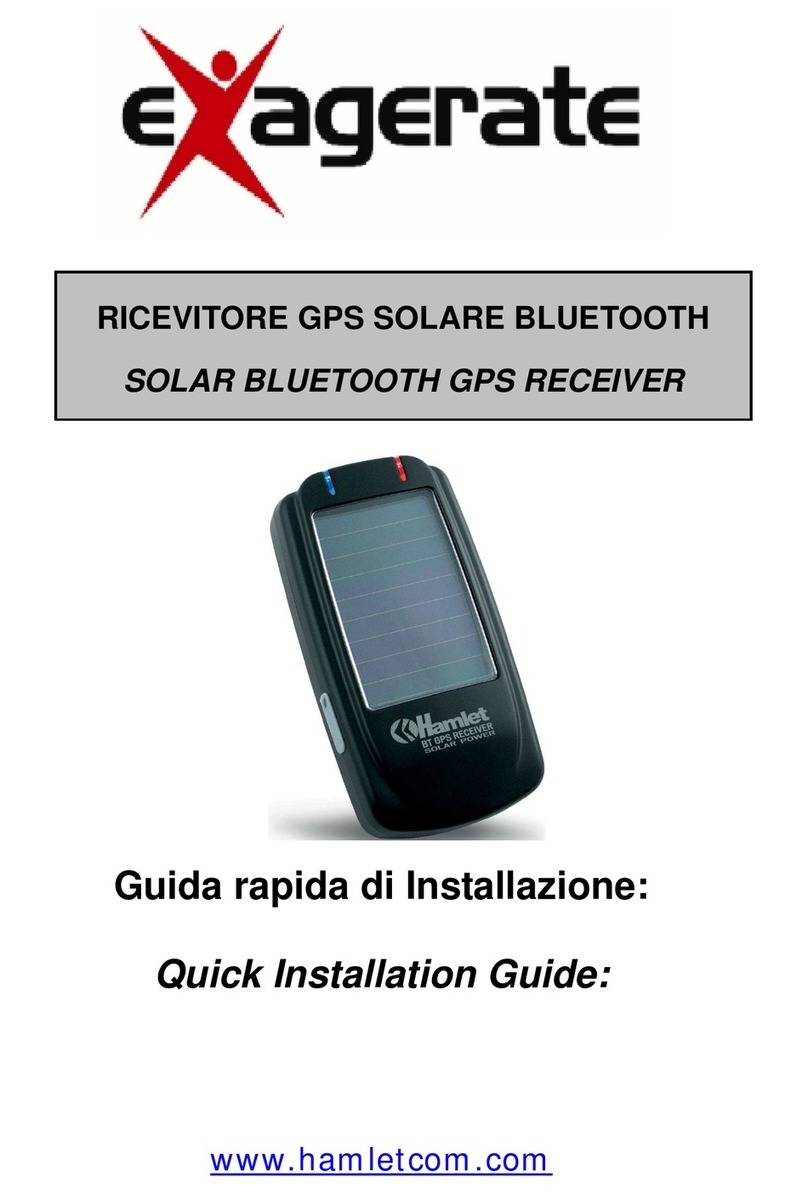
Hamlet
Hamlet SOLAR BLUETOOTH GPS RECEIVER Quick installation guide

Blaupunkt
Blaupunkt TravelPilot Lucca Operating and mounting instructions
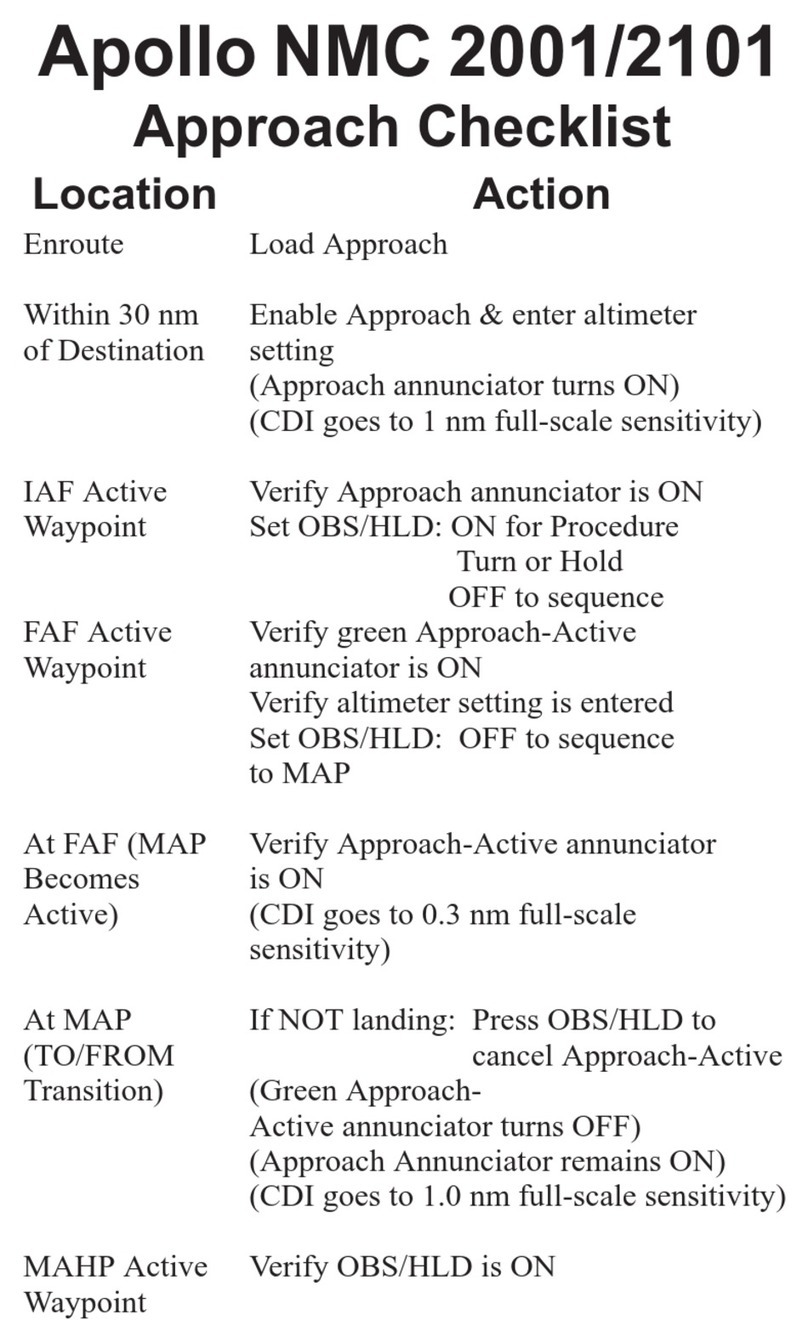
II Morrow Inc.
II Morrow Inc. Apollo NMC 2001 Checklist

